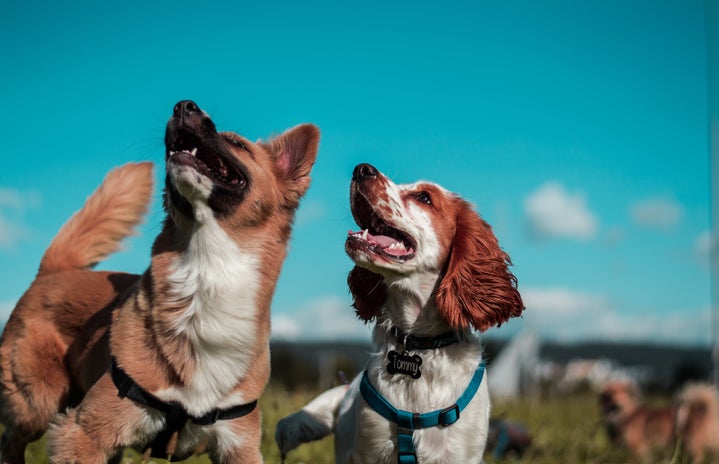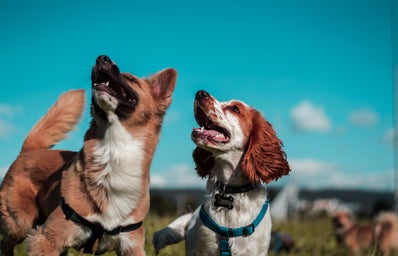In case you haven’t heard of one of my favorite places, let me introduce you to the Penn Vet Working Dog Center (PVWDC). Located in South Philly, the Working Dog Center was founded by Dr. Cynthia Otto in 2012, one year after the September 11 attacks on the World Trade Center. The search dogs deployed to look for victims of the attack were indispensable in rescuing those trapped in the rubble or bringing closure to victims’ family members.
The problem Dr. Otto was looking to remedy, however, was the outsourcing of working dogs from foreign countries. You may be familiar with the work dogs who handle explosive or narcotics detection with security forces, but Dr. Otto wanted to expand the places dogs could be used by further refining canine training processes—thus ensuring societal advancements in health and safety.
Working dogs need proper training regimens similar to that of athletes; they must be kept in good shape, properly stretched before working, monitored for their body temperature in certain weather conditions, and be trained to focus in distracting environments. The dogs at the PVWDC go to school Monday through Friday; in the evenings and on weekends, they get to go home with a foster family to live like a regular dog—albeit a very high energy normal dog (I know as a former foster family member myself!)
Dogs are trained on scent detection since their arrival as puppies, using a lab manufactured artificial odor that can’t be found anywhere else out in the world. This gets the dog used to using their nose.They start by playing with a scent imprinted towel, and eventually move up to a scent board where they have to correctly choose scents.
Dogs try out several jobs before they’re put in a formal training regimine, and most end up as either live–find search and rescue dogs, single–purpose detection dogs for explosives or narcotics, or sometimes dual–purpose detection dogs who do police K9 bite work. Bite work may sound scary, but the dogs are trained from the beginning to see their work as a game; they just think they’re working hard to receive a treat, favorite toy, or affirmation from their handler. They have to bite down hard once, and aren’t allowed to regrip, as the goal is to take down a potential criminal, not to injure them more than necessary. Some dogs get placed in unique jobs; in the past, they’ve had a bed bug detector dog, diabetic alert dog, and a wildlife protection scat tracker dog.
Some dogs also enter into ovarian cancer research, where dogs differentiate between benign and cancerous tissue samples. The goal of the study, as the dogs get increasingly more accurate with their detection, is to break the cancerous sample down to its different parts. This could help develop earlier detection methods for ovarian cancer if scientists are able to identify the isolated compounds the dogs smell in each sample.
With research in dog olfaction constantly going on at the PVWDC, it was only natural they would start research on the COVID–19 virus as well. The crux of this study is seeing if dogs could also be used to discriminate between whether a patient is positive or negative for the disease. With rapid turnaround, this detection method would inevitably help isolate those who carry the virus in order to try and reduce spread as much as possible.
The study was looking for people getting COVID tests to volunteer as the participants for the dogs to practice their scent discrimination. This makes us university students, who’re already getting tested weekly, prime candidates for the study!
Since I’ve never had COVID and produced a negative test for the study, my sample would ideally be one that a dog would recognize as negative as well. For the sample, we were sent a plain white T–shirt to sleep in the night we got our COVID test. We had to make sure to not wear any other product with a strong scent, and record how long we slept in the shirt before taking it off as soon as we woke up.
Typically, in other medical studies, dogs would be smelling what are called volatile organic compounds associated with each medical condition, present in saliva, blood, urine, or breath. It’s another layer to the study, to see if the dogs would be able to get a good read of the scent on my T–shirt, most likely coming from my breath or perspiration. Dogs can smell extremely low concentrations of scent thanks to their 300 million olfactory receptors compared to a human’s six million, allowing them to sniff out things we can only find in a lab.
All in all, it was super easy to just wear a T–shirt to sleep in (something I do anyway), and it was super exciting to hear this study could find out if trained dogs have the potential to minimize the spread of this unfortunate virus.


